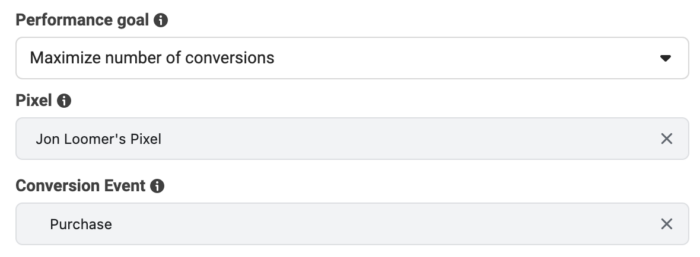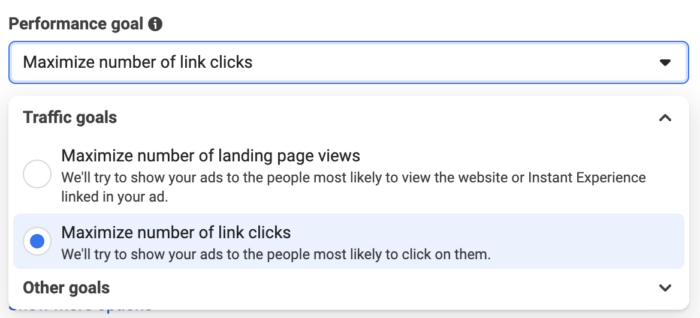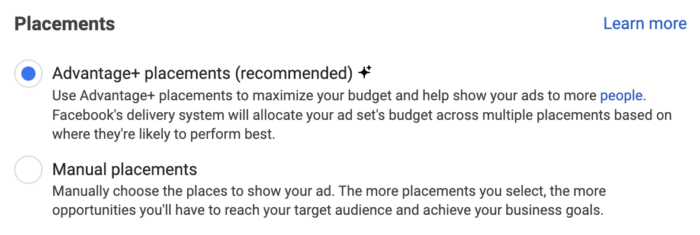If you are to find success with Meta ads, you won’t do so blindly. You must understand the role of the Meta ads algorithm and generally how it works.
This isn’t about manipulating the algorithm, taking advantage of unique algorithmic preferences for your gain. Chasing the algorithm is a fool’s errand. You’ll find yourself repeatedly trying to please something that is constantly changing while ignoring what’s most important: Valuable ad content.
Instead, this is about a general understanding of what the Meta ads algorithm is trying to do, and the strengths and weaknesses that result. Once you understand this, you will have a better understanding of what you should and shouldn’t be doing with your ads.
Let’s go…
The Unknown Formula
First, this post isn’t going to unveil the secret formula of the Meta ads algorithm. While bits and pieces of it have been discussed over the years, we don’t know the actual recipe.
And even if we did know the individual ingredients, there are far too many moving parts to obsess over it. How it works is reliant on how users — and your ideal audienceThis is the group of people who can potentially see your ads. You help influence this by adjusting age, gender, location, detailed targeting (interests and behaviors), custom audiences, and more. More — are consuming conten. Meta, too, can tweak it at any moment.
So, no, this isn’t going to be revelatory. And truthfully, revealing the secret of the Meta ads formula would likely result in only temporary benefits.
Once again, if you’re chasing an algorithm, you are deprioritizing effective copy and creative in favor of what you think Meta wants. Don’t do that.
The Basics
It’s important that you understand the basics of how the Meta ads algorithm works.
First, your ads are delivered via an ads auctionFacebook uses an ad auction to determine the best ad to show to a person at a given point in time. The winner of the auction is the ad with the highest total value, based on bid, estimated action rates, and ad quality. More. You are competing with other advertisers to reachReach measures the number of Accounts Center Accounts (formerly users) that saw your ads at least once. You can have one account reached with multiple impressions. More your ideal audience. The better ad or higher bid — or combination thereof — will win that auction. Ideally, you’ll win it with better copy and creative while spending less.
Beyond that, the main thing to understand is that the algorithm has a singular goal: Get you as many of your desired actions possible at the lowest cost (or highest value or at the highest ROAS, depending on your optimizationThe Performance Goal is chosen within the ad set and determines optimization and delivery. How you optimize impacts who sees your ad. Meta will show your ad to people most likely to perform your desired action. More).
The Meta ads algorithm will adjust in realtime to accomplish this, distributing your budgetA budget is an amount you're willing to spend on your Facebook campaigns or ad sets on a daily or lifetime basis. More to different people or placements. Don’t forget this. Each time you remove a placementA placement is a location where your ad is shown. Examples include Facebook's mobile Feed, Messenger, Instagram feed, Audience Network, right-hand column, and more. More or limit the targeting, you are restricting the options that the algorithm has.
The algorithm is constantly learning from your results and making changes as necessary to continue getting you those results. That’s why it needs volume of results to learn from, otherwise learning will be limited.
The Strengths
The Meta ads algorithm is its strongest when optimizing for a conversion — especially a purchase.

As described above, the way your ads are distributed is fluid. The algorithm will constantly update in an attempt to get the event you told it that you want (in this case purchases).
If you want purchases, optimize for purchases. That way, you and the Meta ads algorithm are on the same page about what it is that will make your ad setAn ad set is a Facebook ads grouping where settings like targeting, scheduling, optimization, and placement are determined. More successful. If you choose something else while wanting purchases, the algorithm can be led astray.
Of course, there may be some exceptions, particularly in the case that you are unable to get the necessary volume of purchases for the algorithm to learn and adjust. But when possible, optimize for purchases when you want purchases.
The Weaknesses
The biggest weaknesses of the Meta ads algorithm happen at the top of the funnel. The most glaring results I’ve seen are related to link clicksThe link click metric measures all clicks on links that drive users to properties on and off of Facebook. More, landing page viewsLanding Page View is a Facebook ads metric that represents when people land on your destination URL after clicking a link in your ad. More, and ThruPlaysThe number of times your video was played for at least 15 seconds or to completion. More. Let’s discuss why these weaknesses are possible.
If you optimize for purchases, Meta will try to find you purchases. That’s good. While some purchases can certainly be higher value than others, there aren’t weaknesses in the algorithm that will lead to low-quality purchases or accidental purchases. And if you want higher value, you can actually optimize for that, too.
The most common issue is related to the desire to drive traffic to a website, rather than get conversionsA conversion is counted whenever a website visitor performs an action that fires a standard event, custom event, or custom conversion. Examples of conversions include purchases, leads, content views, add to cart, and registrations. More. In that case, you’ll optimize for either landing page views or link clicks.

This sounds like a reasonable thing to do. But the problem is that you don’t just want link clicks and landing page views. You expect that some of these people will actually stick around and do other things — maybe even purchase — on your website.
But because the algorithm is literal and has a singular goal of getting you that one thing, it doesn’t care what those people do after clicking. And the weakness is that one placement in particular is prone to accidental clicks, click fraud, and bots. That placement: Audience NetworkAudience Network is a network of mobile apps that have been approved to monetize their apps with ads. This is how you can show your Meta ads to people while they are away from the Meta family of apps. Audience Network and associated groups are among your placement selection options in the ad set. More.
The result is the algorithm is trying to make you happy with lots of link clicks and landing page views, so it starts sending more and more budget to Audience Network. It thinks you’ll be happy. You may be temporarily until you see these were empty clicks.
The same might be said of Audience Network Rewarded Video when optimizing for ThruPlays. Since app users are rewarded for watching videos to completion, you’ll get lots of people watching your entire video (or at least 15 seconds). The assumption is that that means they are engaged. But in most cases, they are simply waiting to get something from the app.
What Should You Do?
You’ll be forgiven if you are a new advertiser and aren’t aware of these strengths and weaknesses. But once you are, it starts to shape how you should approach your advertising.
1. When optimizing for conversions.
Avoid restricting the algorithm. Low-quality conversions aren’t an issue caused by the algorithm itself. If you get low-quality leads, that usually has more to do with your ad or form. If you get low-value purchases, you can optimize for Value or set a Minimum ROAS.
Utilize Advantage+ PlacementsFormerly known as Automatic Placements. When you utilize Advantage+ Placements, Meta will automatically optimize which placements are used and when to get you the most results for your budget. More.

If a placement isn’t resulting in conversions, the algorithm will adjust how your budget is distributed. If you limit the placements to only those you believe are high performers, restricting the algorithm can drive up your costs.
You should also avoid small audiences for multiple reasons. First, you’re unlikely to get a high volume of purchases with a small audience. Second, your audience will be expanded by default anyway when optimizing for a conversion due to Advantage Detailed Targeting and Advantage Lookalikes.
You should try going broad. You may find that the algorithm is so smart that you’ll reach many of the same people in your custom audiences anyway.
2. When optimizing for top of funnel actions.
This is where you need to be careful. Because of the literal nature of the algorithm, you need to prevent it from sending you low-quality results. It’s important that you understand the weaknesses.
If you optimize for link clicks or landing page views, remove Audience Network. Maybe you’ll have one of the rare experiences when you achieve miraculous high-quality traffic, but don’t count on it.
If you optimize for ThruPlay, remove Audience Network Rewarded Video. There are other placements to watch out for here as well. If you’re seeing that a too-good-to-be-true percentage of your impressionsImpressions are the number of times your ads were displayed to your target audience. Impressions aren't counted if it is detected they came from bots. More (like close to 100%) result in a ThruPlay, it’s likely too good to be true.
And honestly, even when you make these adjustments, optimizing for anything top of the funnel can be problematic. Even if you restrict placements or the targeted audience, it doesn’t change the goal of the algorithm. It only wants to get you that surface level action, with no concern whatsoever with what they do next.
If you care about what they do next, consider optimizing for something further down the funnel. Or at least experiment with it. Something I’ve done in the past is optimize for deeper website traffic engagement actions based on things like the amount of scroll depth or time spent on a page. That way, the algorithm has a goal that goals beyond the click.
Watch Video
I recorded a video about this, too. Check it out below…
Your Turn
How well do you understand the Meta ads algorithm?
Let me know in the comments below!







